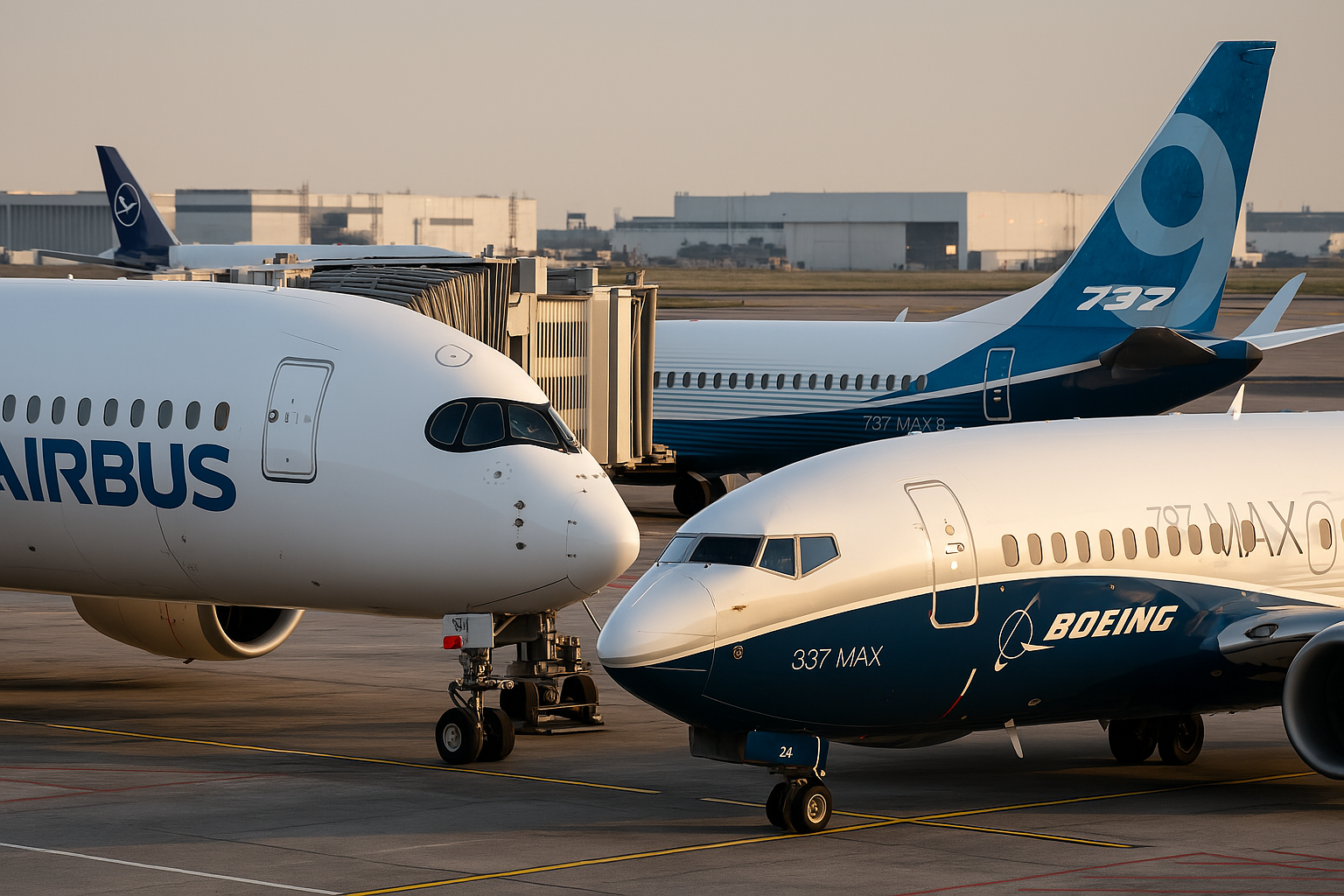Why Boeing Is Losing European Orders in 2025 – Airbus Pulls Ahead Again

Airbus Surges Ahead in Europe – Why Boeing Is Losing Orders Fast in 2025
The ongoing rivalry between Airbus and Boeing has taken a decisive turn in Europe as of 2025. While Boeing remains a dominant global player, Airbus is now clearly outpacing its U.S. rival in the European market. With stronger order books, sustainability leadership, and fewer production setbacks, Airbus has become the go-to manufacturer for many European carriers.
Airbus Out delivers Boeing in Europe
According to Airbus’ 2025 delivery report, the manufacturer delivered 766 aircraft globally in 2024, with 317 of those going to European customers (Airbus, 2025). Boeing, by contrast, managed just around 350 deliveries worldwide for the same period (Forecast International, 2025).
The delivery gap has widened in early 2025. In January, Boeing delivered 45 aircraft compared to Airbus’s 25, but in February, Airbus bounced back with 40 deliveries to Boeing’s 44. Crucially, Airbus deliveries continue to be more concentrated in Europe, while Boeing’s deliveries are skewed toward the Americas and Asia (AeroTime, 2025).

Source: Airbus, Boeing, Forecast International, AeroTime (2024–2025 delivery reports).
European Airlines Favor Familiarity and Flexibility
European carriers such as Lufthansa, Air France-KLM, and Iberia have increasingly prioritized Airbus models. The A320neo family has become a staple for short-haul and low-cost carriers, while the A350 is now a preferred choice for long-haul expansion.
Airbus’s proximity to key European hubs, faster delivery lead times, and support infrastructure make it a more operationally convenient choice. In contrast, Boeing continues to face delays and scrutiny over production quality, particularly regarding the 737 MAX series.

Regulatory Alignment and Green Aviation
Europe is also advancing faster in green aviation policy. The RefuelEU Aviation Regulation mandates the use of Sustainable Aviation Fuels (SAF), starting with a 2% requirement in 2025, growing to 70% by 2050 (EASA, 2025). Airbus has proactively invested in SAF compatibility and hybrid-electric technology, aligning well with EU goals.
Boeing, though active in sustainable aviation, has yet to meet the same level of regulatory synergy in Europe. The company’s SAF initiatives remain less publicized, and European carriers are noticing.
Trust and Timing: Boeing’s Missed Momentum
Boeing’s image in Europe has taken multiple hits over the past five years, from regulatory hurdles to recurring technical issues. While U.S. carriers continue to rely heavily on Boeing, many European operators are diversifying or converting orders to Airbus due to reliability concerns.

Narrow body Orders: A Shift in Market Share
Low-cost carriers in Europe are a key bellwether of aircraft preference. In 2025, easyJet, Wizz Air, and Pegasus Airlines have all increased their Airbus narrow-body orders, citing lower maintenance costs and improved fuel efficiency. Boeing’s share of new narrow-body orders in Europe is now significantly below its 2010s average.
Conclusion: Airbus Gains, Boeing Repositions
Airbus’s strategic position in Europe is now reinforced by data, environmental alignment, and customer confidence. Boeing retains strong global demand, especially in North America and Asia, but its European future depends on how it addresses regulatory expectations and production reliability.
Airbus may not have “won” the global race, but in Europe, 2025 marks a turning point.
Comments